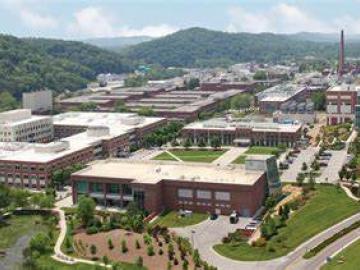Filter News
Area of Research
- Advanced Manufacturing (3)
- Biological Systems (1)
- Biology and Environment (35)
- Clean Energy (60)
- Computational Biology (1)
- Electricity and Smart Grid (1)
- Fusion and Fission (5)
- Isotopes (3)
- Materials (20)
- Materials for Computing (5)
- National Security (13)
- Neutron Science (34)
- Nuclear Science and Technology (3)
- Quantum information Science (1)
- Supercomputing (18)
News Type
News Topics
- (-) 3-D Printing/Advanced Manufacturing (33)
- (-) Bioenergy (46)
- (-) Biomedical (26)
- (-) Grid (20)
- (-) Neutron Science (43)
- (-) Security (10)
- (-) Transportation (25)
- Advanced Reactors (6)
- Artificial Intelligence (38)
- Big Data (21)
- Biology (53)
- Biotechnology (9)
- Buildings (16)
- Chemical Sciences (19)
- Clean Water (14)
- Climate Change (44)
- Composites (5)
- Computer Science (76)
- Coronavirus (17)
- Critical Materials (1)
- Cybersecurity (14)
- Decarbonization (39)
- Emergency (1)
- Energy Storage (28)
- Environment (98)
- Exascale Computing (21)
- Fossil Energy (3)
- Frontier (19)
- Fusion (27)
- High-Performance Computing (38)
- Hydropower (5)
- Isotopes (23)
- ITER (2)
- Machine Learning (19)
- Materials (37)
- Materials Science (36)
- Mathematics (5)
- Mercury (7)
- Microelectronics (2)
- Microscopy (19)
- Molten Salt (1)
- Nanotechnology (16)
- National Security (30)
- Net Zero (6)
- Nuclear Energy (49)
- Partnerships (11)
- Physics (25)
- Polymers (7)
- Quantum Computing (14)
- Quantum Science (23)
- Renewable Energy (1)
- Simulation (23)
- Software (1)
- Space Exploration (11)
- Summit (29)
- Sustainable Energy (36)
- Transformational Challenge Reactor (3)
Media Contacts

Rishi Pillai and his research team from ORNL will receive a Best Paper award from the American Society of Mechanical Engineers International Gas Turbine Institute in June at the Turbo Expo 2024 in London.

ORNL’s Omer Onar and Mostak Mohammad will present on ORNL's wireless charging technology in DOE’s Office of Technology Transitions National Lab Discovery Series Tuesday, April 30.

ORNL’s Erin Webb is co-leading a new Circular Bioeconomy Systems Convergent Research Initiative focused on advancing production and use of renewable carbon from Tennessee to meet societal needs.

Scientists at ORNL have developed 3D-printed collimator techniques that can be used to custom design collimators that better filter out noise during different types of neutron scattering experiments
ORNL scientists have determined how to avoid costly and potentially irreparable damage to large metallic parts fabricated through additive manufacturing, also known as 3D printing, that is caused by residual stress in the material.

Astrophysicists at the State University of New York, Stony Brook and University of California, Berkeley, used the Oak Ridge Leadership Computing Facility’s Summit supercomputer to compare models of X-ray bursts in 2D and 3D.

An experiment by researchers at the Department of Energy’s Oak Ridge National Laboratory demonstrated advanced quantum-based cybersecurity can be realized in a deployed fiber link.

Scientists at ORNL are looking for a happy medium to enable the grid of the future, filling a gap between high and low voltages for power electronics technology that underpins the modern U.S. electric grid.

New computational framework speeds discovery of fungal metabolites, key to plant health and used in drug therapies and for other uses.

The 2023 top science achievements from HFIR and SNS feature a broad range of materials research published in high impact journals such as Nature and Advanced Materials.




